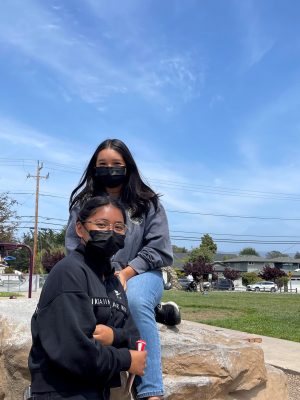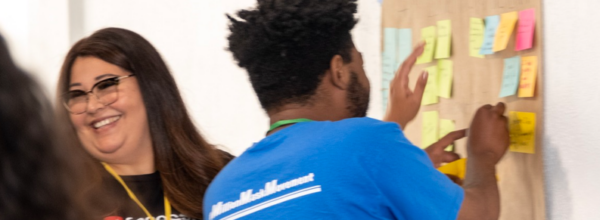Sometimes it just pays to flip the script. That’s what the Live Oak Youth Partnership in Santa Cruz learned when it went looking for ways to connect with teens around healthy relationships.
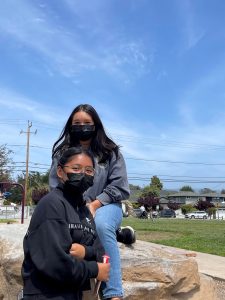
The partnership—which includes Cradle to Career, Salud y Cariño, Live Oak School District, and Santa Cruz Community Health—began by reaching out to teens, parents and other residents of the Live Oak community to get a sense of the concerns in this largely Latino, immigrant neighborhood. The coalition connected through community circles with moms at a park, youth at the local Boys and Girls Club, and formerly incarcerated men from Santa Cruz Barrios Unidos, a nonprofit focused on social justice and non-violence through cultural healing and community development.
The Live Oak Youth Partnership found that local teens want to not just be seen but treated with respect and dignity. They wanted non-judgmental adults in their corner. They longed for more safe, welcoming, and culturally inclusive spaces where they could connect with peers and feel free to be their authentic selves. Parents wanted caring adult allies and mentors for their kids. Both parents and teens favored more positive activities for youth in the area. The partnership took this information on board as it considered ways to reach youth with education on building healthy relationships and avoiding domestic and intimate partner violence.
At first organizer Aracely Contreras thought that a school campus might be the best way to connect with teens around this kind of programming. The lead community organizer for the parent advocacy organization Cradle to Career and Salud y Cariño, Contreras works closely with middle school youth and families while supporting new C2C staff at the district’s three elementary schools. But COVID—and ensuing regulations prohibiting volunteers on school campuses during the pandemic—put a hard stop to that idea.
A perception loomed in the larger community that teens of color who frequented the park were prone to violence and suspicious behavior — a narrative that wasn’t fair to the youth or the park.
What to do? Contreras, herself the parent of two, considered meeting at a local park on Felt Street. However, she had heard disparaging talk about teens hanging out there. It was not a safe place, some said, and best avoided. A perception loomed in the larger community that teens—in particular, young men of color—who frequented the park were prone to violence and suspicious behavior.
But as Contreras discovered after doing a little digging, that narrative wasn’t fair to the youth or the park. She learned that teens did gather there—and sometimes things got rambunctious and rowdy—but there wasn’t much for the dozens of adolescents who met there to actually do. It was also true that the park could use a little TLC.
In 2020, a group of mom volunteers led by local advocate and Live Oak Youth Partnership member Yadira Flores decided to beautify the space in a community cleanup, which included weeding, planting, and a rock painting art project. The park was revamped and, during the heart of COVID, the community held a celebration where socially distanced families and friends came to watch dance performances, enjoy food and drink from vendors, and play games on the lawn, a labyrinth, and the skatepark.
That got Contreras and her crew thinking. What if the Live Oak Youth Partnership helped shift the focus away from the negativity directed at adolescents? What if the coalition could figure out how to promote the transformed park as a welcoming space where youth could help design and lead community activities? Over the course of several months the partnership learned that if you build it—in this case positive, youth-led programming—they will come.
Turning a negative narrative on its head
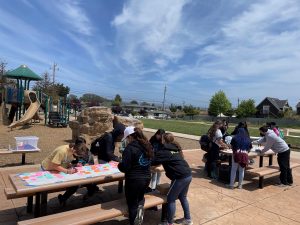 Live Oak Youth Partnership members brainstorm on fun activities for the park using human-centered design tools (credit: Aracely Contreras)
Live Oak Youth Partnership members brainstorm on fun activities for the park using human-centered design tools (credit: Aracely Contreras)
Contreras assembled her Live Oak crew — two teens (one from a high school and one from a middle school) and two parents (who happen to be their moms) — and decided to meet local youth where they were at. In this case, that was Felt Street County Park, conveniently located across the street from Shoreline Middle School. Contreras is Cradle to Career’s liaison with the school and has relationships with students and teachers there. Yes, the park had gotten a bad rap as a place where trouble and tension brewed, but it was also where teens wanted to hang out with their peers. How to turn things around? As one survey respondent replied: “It all starts with a safe community and youth having a safe place to go after school.”
 In April, Live Oak decided to host an ice cream social at the park. The first 60 teens who came to the pop-up event received a ticket for a free ice cream. They kept it local; the vendor is a father who lives in the neighborhood. The only catch: Teens had to answer a few questions on a partnership survey, including what activities they’d like in the park. The event included music and youth-led activities such as soccer and Jenga, the tower-building block game. It turns out few kids could resist something free, especially ice cream. All the tickets were snapped up, and the event proved such a success it sparked an idea to run regular after-school programming at the park on Wednesdays, when middle school gets out early. The goal was to engage with teens honestly and respectfully, earn their trust, and offer programming under the prevention/intervention umbrella in addition to the food, fun, and games.
In April, Live Oak decided to host an ice cream social at the park. The first 60 teens who came to the pop-up event received a ticket for a free ice cream. They kept it local; the vendor is a father who lives in the neighborhood. The only catch: Teens had to answer a few questions on a partnership survey, including what activities they’d like in the park. The event included music and youth-led activities such as soccer and Jenga, the tower-building block game. It turns out few kids could resist something free, especially ice cream. All the tickets were snapped up, and the event proved such a success it sparked an idea to run regular after-school programming at the park on Wednesdays, when middle school gets out early. The goal was to engage with teens honestly and respectfully, earn their trust, and offer programming under the prevention/intervention umbrella in addition to the food, fun, and games.
The partnership also responded to the data it collected. Teens wanted a place to come together where they could participate in physical activities with equipment provided on site. The coalition continued its pop-up events while putting together a pilot program for the fall semester. Each event will include music and food, a big draw for teens. And there’s room to factor in informal time to chat with teens about whatever concerns might be on their minds. The programming will also kick off with a five-week soccer tournament. One of the coaches: Oscar Corcoles, a Chicano first-generation college graduate who was born and raised in the county. Corcoles is an avid soccer player and founder of Fuerza Latinx, a Santa Cruz-based higher education resource for Latinx students.
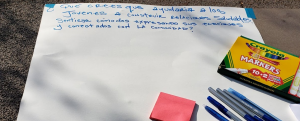
Another five-week session, run by instructors from another local nonprofit, Flow, will bring BMX bikes, skateboards, and helmets to the park; its programs are designed to empower youth and create belonging among often discounted and forgotten young people. As Contreras notes, many of the youth the team is trying to reach don’t have access to this kind of gear. Future programming might focus on graffiti art or music production. Another key partner is the Boys and Girls Clubs’ Live Oak Teen Center, which provides fun teen games and crafts at the park. There are no shortage of ideas.
The partnership wants to create a consistent, compassionate, and healing space for participants. “Youth, especially boys, need sports as an outlet,” wrote one survey respondent. “It helps them relieve stress and tension that has built up due to generational trauma and systemic segregation.”
Between these sessions, the coalition will host activities and ice breakers on discussion topics such as identity, healthy relationships, domestic violence, and intimate partner violence.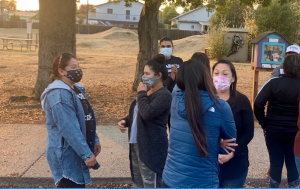
Health center case manager and Live Oak Youth Partnership team member, Cindy Mendoza-Lopez, a counselor who also works within the schools, has helped to identify marginalized youth who might get lost in the system and who could benefit from such programming.
Lessons Learned
Get out into the community. The fastest way to understand the needs of community members—and to gain their trust and respect—is to meet them where they are: schools, local parks, neighborhood clubs, community organizations and the like. That’s where the best work happens, says Contreras, and where deep bonds and true connections can be built.
Be flexible. Challenges will arise, so learn to adapt as needed. Once it was clear that on school site events were off the table, for example, the collaborative found another venue to meet its target audience.
Include people with lived experience. Live Oak Youth Partnership includes two teens and two parents (in this case, both mother-daughter combos), who offer community connection and insights into the needs, wants, and challenges of the population the partnership is trying to reach.
Be aware that building bonds with institutions takes time. Schools aren’t always the most open institutions to outsiders. It takes time to earn the trust and respect of school staff, principals, and administrators, who are often overworked and under-resourced. Turnover—at the school and district level—can make that even more difficult. Factor in the stresses of a pandemic, and expect to find obstacles to connecting, brainstorming, and troubleshooting with school staff. Persevere and figure out ways to loop school staff in without adding to their burden.
Turn a negative into a positive. Sometimes a challenge is simply a problem waiting for solutions. For the Live Oak Youth Partnership, the neighborhood park — once a place where youth of color were stigmatized — has become a place where community members can now see youth engaged in and leading positive pursuits. And the school has been offering input and support since the program has gotten off the ground.
Provide incentives for participation. It’s not enough to expect engagement; sometimes a token of appreciation for a person’s time and insights helps reach the desired demographic. It doesn’t have to be a grand gesture: an ice cream cone as a thank you for filling in a survey, a voucher at a juice bar for joining a community circle, a store gift card to show gratitude to volunteers who help make events happen. It sends the signal that the person is valued and their time matters.
Amplify Healing Connections seeks to strengthen interventions designed to prevent domestic violence and promote health and well-being for adolescent youth and their adult allies. Launched in March 2021, the 22-month program, with funding from the Blue Shield of California Foundation, is a collaboration with six California-based, multi-sector partnerships, each involving at least one community-based organization and one health care provider serving youth 12-18 years old. Youth-service organizations play a pivotal role in promoting healthy communication and providing a strong, nourishing environment for young people and their caregivers. Coordinated efforts across community organizations can amplify positive childhood experiences (PCEs) and help prevent, reduce, and even reverse the impact of early adversity.
_____________________________________________________________________________
Photo credits of youth in the park: Live Oak Youth Coalition, courtesy of Aracely Contreras
_____________________________________________________________________________
Other stories in this series include:
The Pandemic Led This Central Coast Alliance to Focus on Teens in Crisis
10 Ways to Create Effective Community Partnerships
Amplify Healing Partnerships Hosts Courageous Conversations for Teens
Give the Kids a Voice: Working on Resilience with Teens and Families at Risk
Find this useful or interesting? We’re constantly sharing stuff like this. Sign up to receive our newsletter to stay in the loop.

